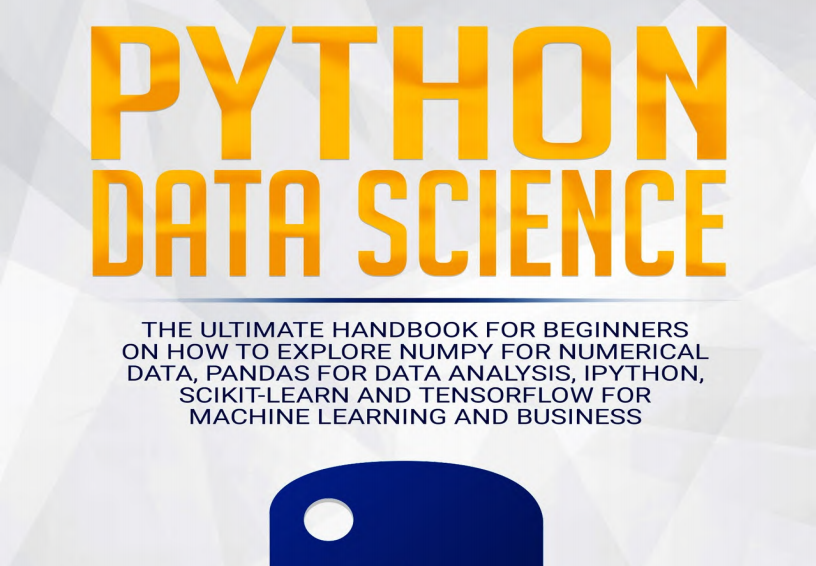The book “Python Data Science: The Ultimate Handbook for Beginners on How to Explore NumPy for Numerical Data, Pandas for Data Analysis, IPython, Scikit-Learn, and TensorFlow for Machine Learning and Business” is designed to serve as an introductory guide for beginners looking to dive into the field of data science using Python. Here’s an overview of what the book covers:
- NumPy for Numerical Data: The book starts by introducing NumPy, which is a fundamental package for scientific computing in Python. It covers the basics of using NumPy for numerical operations, including arrays, matrices, and mathematical functions.
- Pandas for Data Analysis: Pandas is a powerful library for data manipulation and analysis. The book delves into how to use Pandas to handle data structures like DataFrames, perform data cleaning, filtering, and aggregation, and visualize data.
- IPython: IPython is an enhanced interactive shell for Python that provides features such as tab completion, code highlighting, and introspection. The book explains how to use IPython for efficient coding and debugging.
- Scikit-Learn for Machine Learning: Scikit-Learn is a machine learning library that offers simple and efficient tools for data analysis and modeling. The book covers the fundamentals of machine learning using Scikit-Learn, including supervised and unsupervised learning algorithms.
- TensorFlow for Machine Learning and Business: TensorFlow is an open-source machine learning framework that is highly popular for its scalability and flexibility. The book introduces TensorFlow and its application in building machine learning models, which can be particularly useful for business applications.
Throughout the book, the author provides step-by-step instructions, examples, and real-world case studies to help beginners understand and apply these tools effectively. The book aims to provide a solid foundation in data science using Python, with a focus on practical skills that can be immediately applied in a business context.
In summary, “Python Data Science” is a comprehensive guide that walks beginners through the essential Python libraries and techniques needed to start a career in data science, with a particular emphasis on the practical aspects of data analysis and machine learning.

The book “Python Data Science: The Ultimate Handbook for Beginners on How to Explore NumPy for Numerical Data, Pandas for Data Analysis, IPython, Scikit-Learn, and TensorFlow for Machine Learning and Business” is suitable for a variety of readers, including:
- Beginners in Data Science: Individuals who are new to the field of data science and want to learn the foundational concepts and tools will find this book particularly helpful. It provides a step-by-step approach to understanding key libraries and techniques.
- Python Programmers: Those who already have a basic understanding of Python programming but want to expand their knowledge into data science and analytics will benefit from the practical examples and applications discussed in the book.
- Students: University or college students studying data science, statistics, computer science, or related fields can use this book as a supplementary resource to enhance their coursework and gain hands-on experience with popular data science tools.
- Business Professionals: Individuals working in business roles who are looking to leverage data analysis and machine learning to drive decision-making and improve business outcomes will find the book beneficial. It focuses on practical applications relevant to the business environment.
- Analysts and Researchers: Data analysts and researchers who wish to incorporate Python into their data analysis workflow can use this book to learn how to utilize libraries like Pandas and NumPy effectively.
Overall, the book is aimed at anyone interested in getting started with data science using Python, regardless of their background, as it provides a solid foundation and practical insights into essential tools and techniques.
